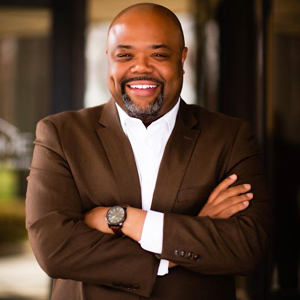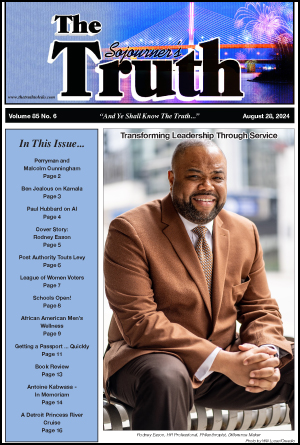
By Asia Nail
The Truth Reporter
In today’s fast-paced corporate world, leadership often takes center stage. However, as Rodney Eason, a seasoned human resources professional and philanthropist, eloquently argues, the true power lies in the intersection of leadership and service. “I’m a businessperson who practices HR,” Eason explains, highlighting his belief that effective leadership is deeply rooted in serving others.
The Essence of Service
Service in leadership isn’t about grand gestures or self-sacrifice; it’s about understanding and fulfilling the needs of others—whether they are employees, customers, or the community. Eason’s career, which spans significant roles at Principle Business Enterprises, The Andersons, Fifth Third Bank, and UPS, has been a testament to this philosophy.
In these roles, he didn’t just guide his teams from the top; he worked alongside them, ensuring their needs were met so they could, in turn, meet the needs of the company. “I help businesses align their human resources with their growth and development,” he says, underscoring his commitment to service-driven leadership.
This approach has been instrumental in his success. At Erie Home, Eason has been at the forefront of talent development, not just by directing his team but by serving as a mentor, guide and supporter. His methods create work environments where employees feel valued and empowered, directly translating to higher morale and better performance.
Service vs. Leadership: A False Dichotomy
The notion that leadership and service are mutually exclusive is a common misconception. In reality, the best leaders are those who understand that service is an integral part of leadership. Eason believes that service is not just an act but an attitude—one that requires empathy, humility, and a deep commitment to the well-being of others.
“When you’re in a significant role within a nonprofit, corporate, or for-profit business, are you exposing people to new experiences so they can learn from you? As leaders, we must share resources and leverage our influence to serve others.”
When leaders serve, they build trust. This trust becomes the foundation of strong teams and successful organizations. Employees are more likely to go above and beyond when they know their leader has their best interests at heart. This isn’t just theoretical; it’s a principle Eason has applied throughout his career with tangible results.

Transforming Leadership Through Service
By focusing on the growth and development of a business’s team, he ensures staff members are equipped not just to follow orders but to think critically, innovate and lead in their own right. This, he argues, is the ultimate goal of leadership—to empower others to lead. “I am blessed, and that makes me required to be a blessing to others,” Eason reflects, encapsulating his belief that true leadership is about lifting others up.
Eason’s approach is a reminder that leadership is not about titles or authority; it’s about influence. And the most enduring influence is achieved not through command but through service.
Service Beyond the Office Walls
Rodney Eason’s commitment to service extends far beyond his professional life. His involvement in organizations such as the Toledo Museum of Art and the Alpha Phi Alpha fraternity highlights his dedication to serving the community. As vice chair on the Toledo Museum of Art Board, Eason plays a pivotal role in ensuring that the museum remains a vibrant cultural hub in the community. He is particularly excited about the museum’s current exhibition, Ethiopia at the Crossroads.
“It’s an amazing opportunity for the African diaspora to see themselves represented in the museum,” he says, emphasizing the importance of diverse representation in cultural institutions.
“From a board oversight perspective, we work with the TMA team to ensure that all backgrounds are well represented at our museum.”
Similarly, Eason’s membership in Alpha Phi Alpha, a fraternity with a long history of community service and leadership development, underscores his commitment to empowering others. Through his involvement, he mentors youth, guiding them in both their professional lives and personal growth, teaching them the importance of giving back to their communities.
The Ripple Effect of Service-Driven Leadership
Eason’s commitment to service-driven leadership is creating a ripple effect that extends far beyond the immediate circles in which he operates. When leaders like Eason actively engage in community service, they set a powerful example for others to follow. This example is particularly impactful in corporate settings, where the focus can often become narrowly centered on profit and efficiency. Eason demonstrates that by investing in the well-being of the community, organizations can cultivate a more holistic and sustainable approach to success.
One of the most significant outcomes of this ripple effect is the fostering of a culture of service within organizations. Employees who see their leaders actively serving the community are more likely to engage in similar activities themselves. This culture of service not only improves employee morale but also strengthens the organization’s connection to the community, leading to a more loyal customer base and a stronger corporate reputation.
Moreover, the benefits of service-driven leadership extend to the community itself. When organizations prioritize service, they contribute to the overall health and vitality of the community. This, in turn, creates a more supportive environment for businesses to thrive. It’s a symbiotic relationship where both the organization and the community are uplifted through acts of service.
Practical Steps to Implement Service-Driven Leadership
For leaders looking to adopt a service-driven approach to leadership, Eason’s career offers several practical lessons. First and foremost, it’s crucial to lead by example. Eason’s involvement in the community isn’t just for show; it’s a genuine reflection of his values. Leaders who wish to inspire a similar commitment to service must be willing to roll up their sleeves and get involved themselves.
Another key aspect of service-driven leadership is creating opportunities for others to serve. Eason has consistently focused on empowering those around him, both in his professional roles and his community involvement. By mentoring others and providing them with the tools and opportunities to lead and serve, he ensures that the impact of his leadership is multiplied. Leaders can emulate this by establishing programs within their organizations that encourage and support community service, whether through volunteer days, charitable giving, or partnerships with local nonprofits.
Communication is also vital in fostering a culture of service. Leaders must clearly articulate the importance of service within the organization and how it aligns with the company’s values and goals. Eason’s approach to leadership emphasizes transparency and open dialogue, ensuring that everyone within the organization understands the value of service. This communication helps to build a shared sense of purpose and motivates employees to contribute to the organization’s service initiatives.
Finally, it’s important for leaders to recognize and celebrate the contributions of those who serve. Eason’s leadership style is characterized by a deep appreciation for the efforts of his team and his community. By acknowledging and rewarding acts of service, leaders can reinforce the importance of these actions and encourage others to follow suit.
Challenges and Opportunities in Service-Driven Leadership
While the benefits of service-driven leadership are clear, it’s not without its challenges. Leaders may face resistance from within their organizations, particularly if the culture has traditionally been more focused on profit than on service. Changing this mindset requires patience, persistence, and a willingness to challenge the status quo.
Additionally, balancing the demands of leadership with the commitment to service can be difficult. Eason’s involvement in both his professional and community roles is a testament to his time management skills and his ability to prioritize what truly matters. Leaders looking to adopt a similar approach must be prepared to make sacrifices and find ways to integrate service into their busy schedules.
However, these challenges also present opportunities. Leaders who successfully implement service-driven leadership can differentiate their organizations in a crowded marketplace. In an era where consumers and employees alike are increasingly looking for companies that align with their values, a commitment to service can be a powerful competitive advantage.
The Legacy of Service-Driven Leadership
Rodney Eason’s career and community involvement illustrate the profound impact that service-driven leadership can have. By prioritizing service, he has not only achieved professional success but has also made a lasting difference in our community. His example serves as a powerful reminder that leadership is not just about directing others but about serving them.
“What I want people to say about me when I’m not around is that I made a difference in the lives of those I met, and in the lives of those I did not have the pleasure of meeting as well.”
As more leaders embrace this philosophy, the ripple effects will continue to spread, creating stronger organizations and more vibrant communities. Thank you for your life’s work, Mr. Rodney Eason. Your legacy of service-driven leadership embodies empowerment, growth, and positive change—a legacy that every leader should strive to leave behind.”

